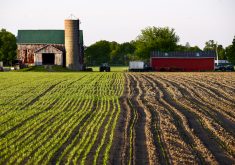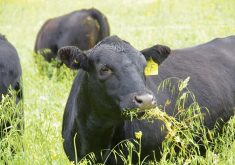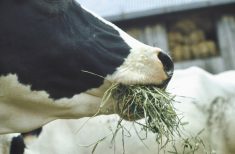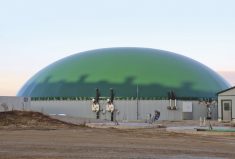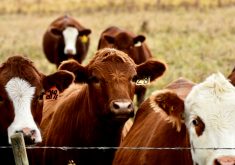I recently gave a presentation on the future of livestock focused on big things that will impact the future.
Quantum computing will affect analysis of big data, drug development and many other aspects of livestock production. Genomics is already changing livestock production and that impact is sure to get much larger.
Consumer demand and retail pull will drive new production standards that may be incentivized in the short run but will become the new norm over the long term. Climate change will impact all that we do in society, and that includes how we raise animals.
Read Also

Canada seventh-most influential country on agri-food
Report from Dalhousie University and MNP shows Canada ranks seventh among G20 countries on agri-food influence.
Livestock producers must not only make positive change but very deliberately demonstrate themselves as part of the solution. Even more, the livestock industry must proactively position itself as a key element of Ontario’s economy, environment and food security, and commit to working with academia and government to innovate and grow the sector in a sustainable manner.
Shortly after giving that presentation, I saw mention on Twitter of a webinar titled “The Future of Livestock”, hosted by the International Association of Agricultural Economists.
The moderator got my attention right away as she spoke of being a child in rural Zimbabwe and how the 15 to 17 kilograms of meat from the one slaughtered goat per month fed the grandmother, her eight children and 17 grandchildren. It was definitely a different perspective.
The next speakers talked about animal-sourced foods and their impact on stunted growth in children, which is not something we even think of in Canada.
Stunting rates can reach 20 per cent at birth and climb to 40 per cent by two years of age. There is a clear link between increased consumption of animal-sourced foods and reduced rates of stunting. Given that knowledge, calls for reduced meat consumption from some in the West seem rather self-centered and mean spirited.
Next up was Frank Mitloehner, professor at University of California, Davis, speaking about livestock and greenhouse gas (GHG). According to Mitloehner, livestock production does impact the environment, but there is a strong link between productivity and GHG emissions. More productive animals have significantly lower GHG emissions per unit of product.
In fact, 70 to 80 per cent of livestock-produced GHG comes from developing countries due to low productivity.
Mitloehner went on to address options for consumers in develop countries, including plant-based replacements and cellular agriculture or “lab meat.” He did note concerns with highly processed foods, choosing not to eat them himself.
Another possible choice for consumers is the product of cellular agriculture, or lab meat. There is a lengthy article at thecounter.org that provides an excellent critique of the process.
It highlights serious issues around infrastructure cost, particularly at a scale to have any meaningful impact as far as meat replacement, the ability to have both scale and a level of cleanliness to avoid bacterial or viral contamination and the cost of growth medium.
To date, this has not hindered the ability to raise hundreds of millions of dollars in investment. Suffice it to say, many investors may be in for a shock.
So, what is the future of livestock? There seem to be two distinct visions.
One involves highly productive animals as part of food generating businesses. The other involves low productive animals in situations where the food produced is primarily for the owner and their family. We need to understand both and work hard to ensure that the future for the Ontario industry is a bright as possible.
There will be calls for change from non-agriculturalists that are based on non-understanding of the diversity of these livestock worlds and their own agenda. There is a bright future available for the Ontario livestock sector, but it won’t happen on its own.
Now is the time for all interested parties to commit to and work toward that bright future.
Mike McMorris is Chief Executive Officer of the Livestock Research Innovation Corporation and has more than 30 years’ experience in the livestock sector working for government, producers, and industry organizations. Follow LRIC on Twitter: @LivestockInnov.





